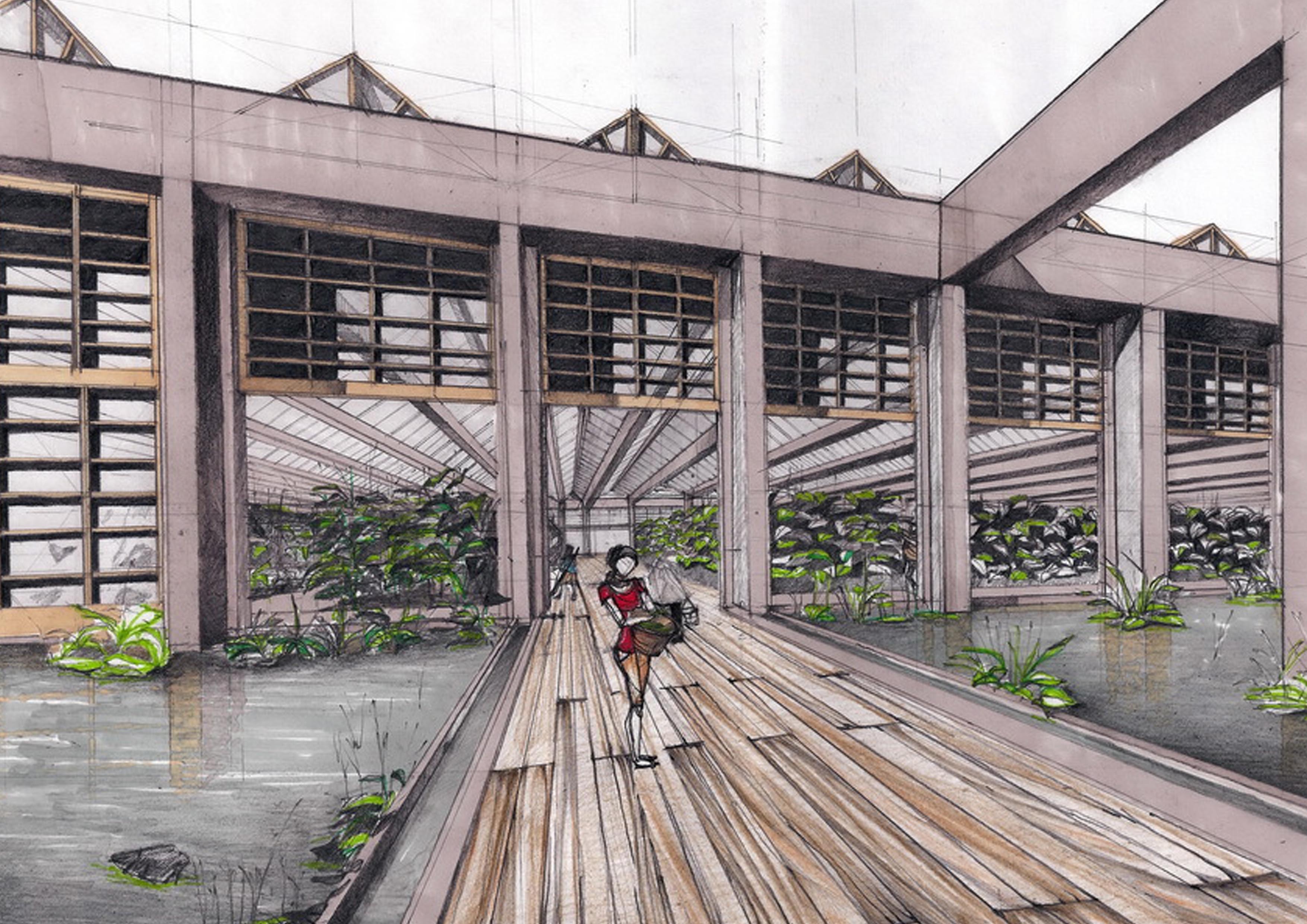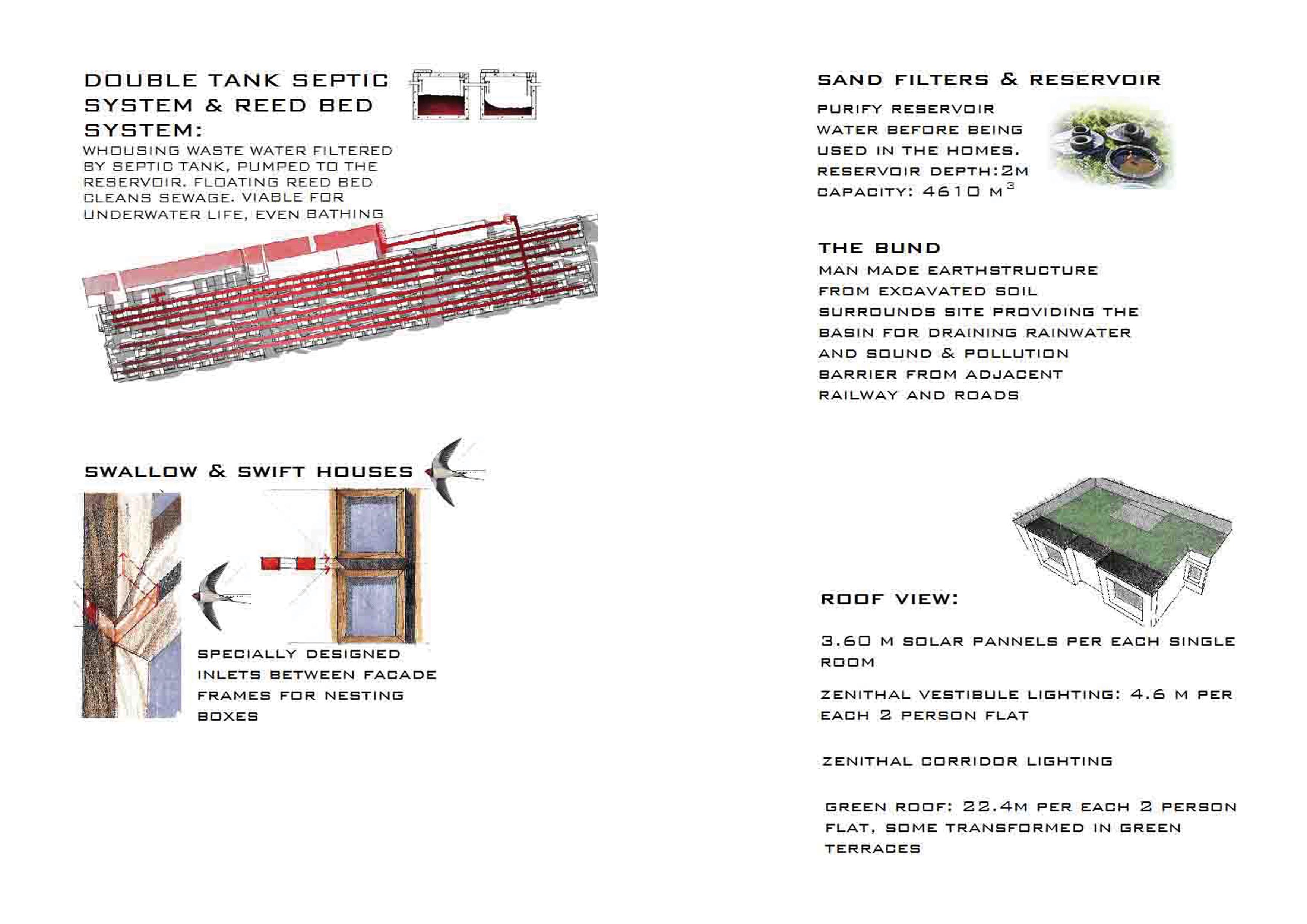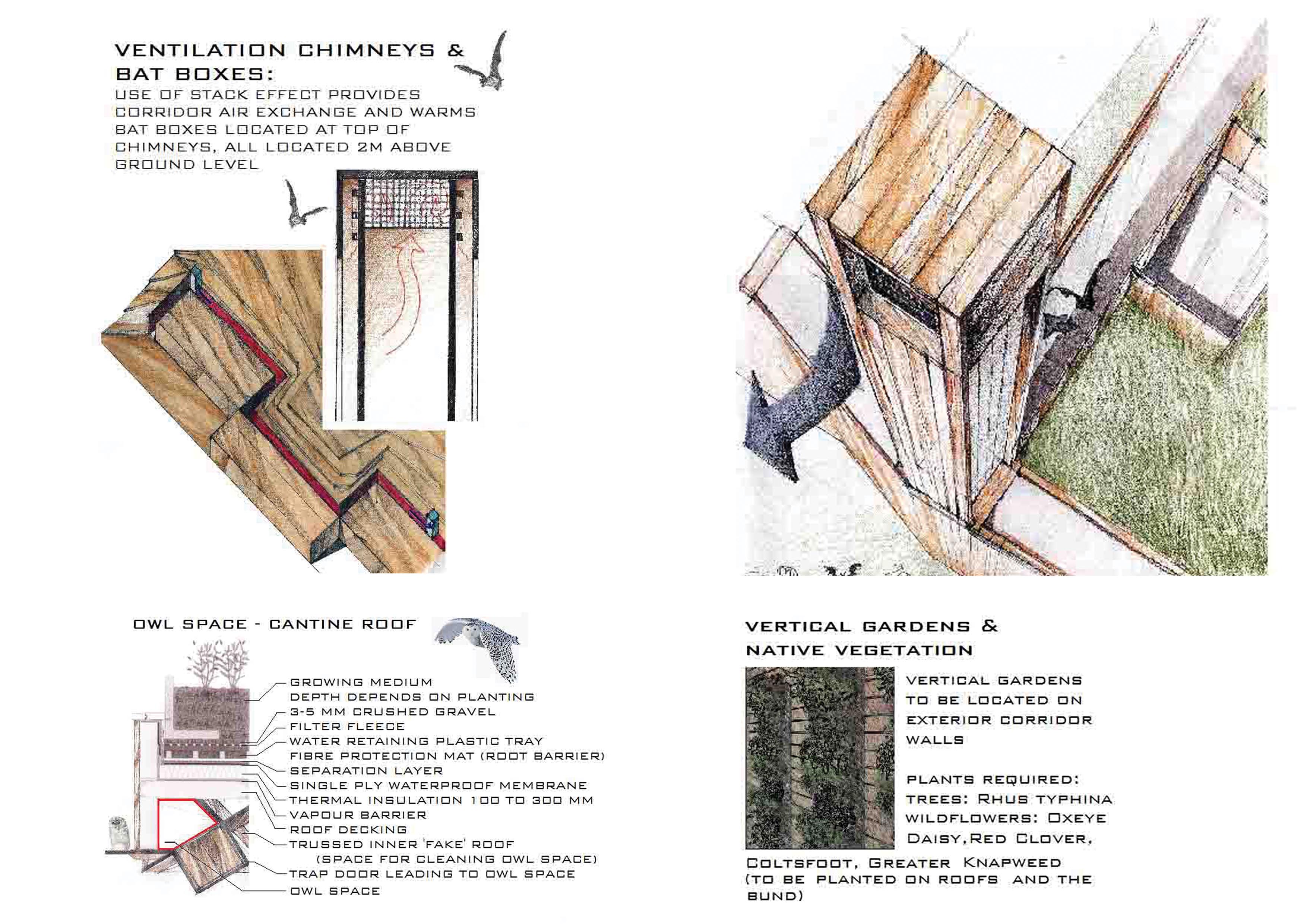As the 2011 Integrated Habitats Design Competition is getting launched, I’m looking at the winning entries from the 2010 competition in a series of posts.
Edge Hill Halls was the overall winner of the 2010 Integrated Habitats Design Competition. Designed by Maria-Cristina Banceanu, the site is a brownfield which previously accommodated a rail depot, the Edge Hill railway station, located in Liverpool. The design transforms this former rail depot into student housing for over 500 students complete with a greenhouse, underground parking, tennis courts, recreation area and a medical clinic. The former depot building is turned into the green house by enclosing the building which will feed the students.
The terraced buildings themselves have all the bells and whistles of green building design including partially submerged wood structures for better insulation, a south facing aspect for light and heat, rainwater collection and reservoir for non-potable water usage, a double tank septic system, solar panels, green roofs and something called ‘the bund’, an earth structure surrounding the site made up from the excavated soil and used to reduce noise pollution and direct rainwater to the reservoir.
However, it’s how many of these elements incorporate habitat which makes this design so interesting. The green roofs are planted with native wildflowers with the aim of reducing maintenance and irrigation while at the same time providing nectar sources and potentially host plants for pollinators. The double tank septic system cleans waste water while at the same time providing habitat. The system collects waste water which is filtered through the septic tanks first before moving into a lake containing a floating reed bed where the roots of the reeds clean the water. The lake in turn serves as a wildlife pond containing fish and attracting other species such as water voles, birds and amphibians and acting as a centerpiece for the main entrance. There are many nesting options incorporated into the architecture as well. Specially designed inlets which are located on the facade of the buildings, provide nesting houses for swifts and swallows. Bat boxes are located at the top of ventilation chimneys, making use of a corridor air exchange to warm the boxes. Owl boxes are also incorporated into the architecture of one building with a fake trussed roof with interior access for cleaning. Green walls are also part of the design using native plants, along with ‘the bund’ which is also to be planted with native trees.
Out of all of the winning designs, this one stands out as truly incorporating habitat. While many of the other designs added habitat, and some did incorporate it creatively, Edge Hill Halls really defined the title of this competition, Integrated Habitats better than the rest. This design demonstrates that thinking about species needs and then thinking about how a design can benefit certain aspect of those needs, such as the case with the bat houses in the ventilation chimneys, is what designers can be capable of if they choose to address biodiversity. Instead of simply adding a pond or native plant garden, incorporating habitat into the fabric of our urban infrastructure is the key of biodiversity, design and cities.
It’s been great fun and fascinating to read through all of the winning entries from the 2010 competition and I eagerly await the results of the 2011 competition to be announced soon.
Read more about Edge Hill Halls and download the full PDF submission.
More from the Integrated Habitats series:









